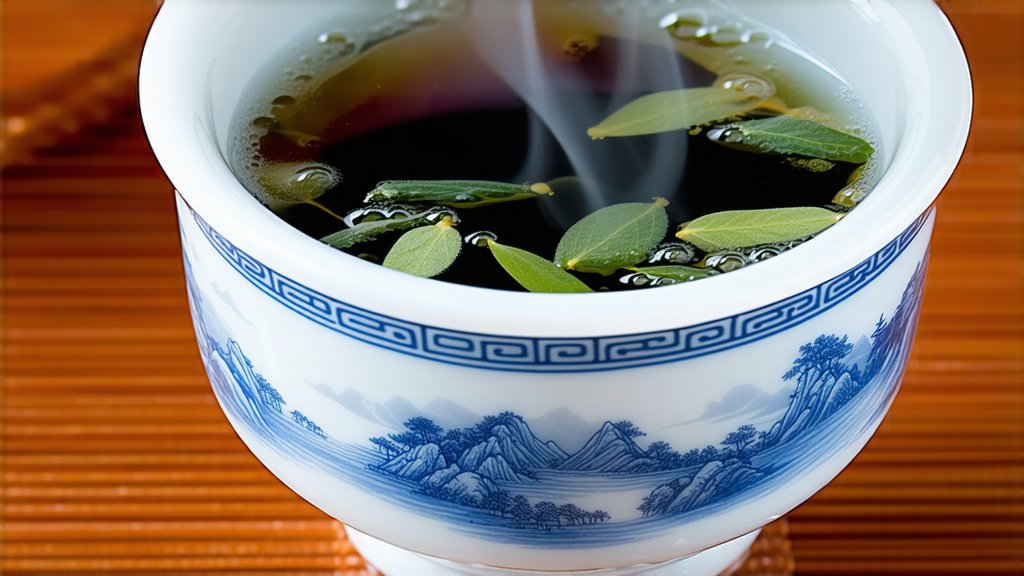
Longjing Tea, also known as Dragon Well Tea, is one of China's most revered green teas, hailing from the picturesque region of Hangzhou, Zhejiang province. This exquisite beverage has a history that spans over a thousand years, dating back to the Tang Dynasty (618-907 AD), where it was initially discovered by Buddhist monks who found its calming properties beneficial for meditation. Over time, Longjing Tea evolved not just as a drink but as a symbol of elegance and refinement, deeply ingrained in Chinese culture and tradition.
Historical Significance
The name "Longjing," translating to "Dragon Well," originates from a well located near the tea gardens, believed to be blessed by a dragon, according to ancient folklore. This mystical association added an air of prestige to the tea, making it a favored choice among emperors and scholars alike throughout history. By the Ming Dynasty (1368-1644 AD), Longjing had gained significant recognition for its unique flavor profile and became a staple in the Chinese imperial court.
Varieties and Classification
Longjing Tea comes in several grades, primarily determined by the timing of harvest and the quality of the leaves. The highest grade, known as "Xu Yue" or Pre-Rain Tea, is harvested before the Qingming Festival (Tomb Sweeping Day), when the first spring shoots are at their tenderest and most nutrient-rich. Following this is the "Yu Qian" or Before the Rain Tea, picked after the festival but still within the early spring season. These early harvests yield the finest quality Longjing, characterized by their vibrant green color, slender shape, and delicate aroma.
The Art of Crafting Longjing Tea
The production of Longjing Tea is an art form that combines meticulous handcrafting techniques with a deep understanding of nature's rhythms. It all begins with the careful selection of tea plants grown in the fertile soils around West Lake, nourished by the region's mild climate and abundant rainfall.
-
Handpicking: Only the youngest shoots and leaves are chosen, typically the top two leaves and a bud. This ensures optimal flavor and nutritional content.
-
Withering: Freshly picked leaves are spread out thinly to allow excess moisture to evaporate, softening the leaves for subsequent steps.
-
Fixation: Unlike other green teas that may be steamed or pan-fried, Longjing undergoes a unique process called "煇鍋" (pan-firing). Skilled tea masters use large woks heated to precise temperatures to stir-fry the leaves continuously. This step not only halts oxidation but also imparts a distinct nutty aroma and flattens the leaves into their characteristic flat shape.
-
Shaping: After fixation, the leaves are shaped manually or using specialized machines to achieve the iconic flat appearance reminiscent of a spearhead.
-
Drying: Finally, the tea is dried to remove any remaining moisture, ensuring longevity without compromising flavor.
Sensory Experience and Tasting Notes
Longjing Tea offers a symphony of flavors and aromas that captivate both novice and connoisseur tea drinkers. Its dry leaves exude a fresh, grassy scent with hints of chestnut and toasted grains. Upon brewing, the liquor transforms into a pale jade hue, revealing a complex bouquet of vegetal sweetness, subtle floral notes, and a whisper of umami.
The taste profile is equally enchanting – a harmonious balance of smoothness, slight astringency, and a lingering aftertaste that invites contemplation. Each sip delivers a burst of freshness that invigorates the senses while soothing the soul.
Proper Brewing Techniques
To fully appreciate Longjing Tea, it is essential to follow traditional brewing methods:
-
Water Quality: Use filtered or spring water to avoid impurities that can alter the tea's natural flavors.
-
Temperature: Heat the water to around 80°C (176°F). Boiling water can scald the delicate leaves, resulting in a bitter taste.
-
Tea-to-Water Ratio: For every 150ml of water, use approximately 3 grams of Longjing leaves. This ratio ensures a robust yet refined infusion.
-
Steeping Time: Infuse for about 1-2 minutes for the first brew. Subsequent infusions can be steeped slightly longer, as Longjing can withstand multiple brews without losing flavor.
-
Appreciation: Observe the unfurling leaves as they dance in the water, releasing their essence gradually. Savor each sip mindfully, allowing the flavors to unfold on your palate.
In conclusion, Longjing Tea stands as a testament to China's rich tea heritage, embodying the perfect blend of artistry, science, and nature's bounty. Its history, varieties, meticulous craftsmanship, and sensory delights make it not just a beverage but an experience that transcends time and borders. Whether you're a seasoned tea enthusiast or a curious newcomer, sharing a pot of Longjing is akin to participating in a timeless ritual that celebrates life's simple pleasures.